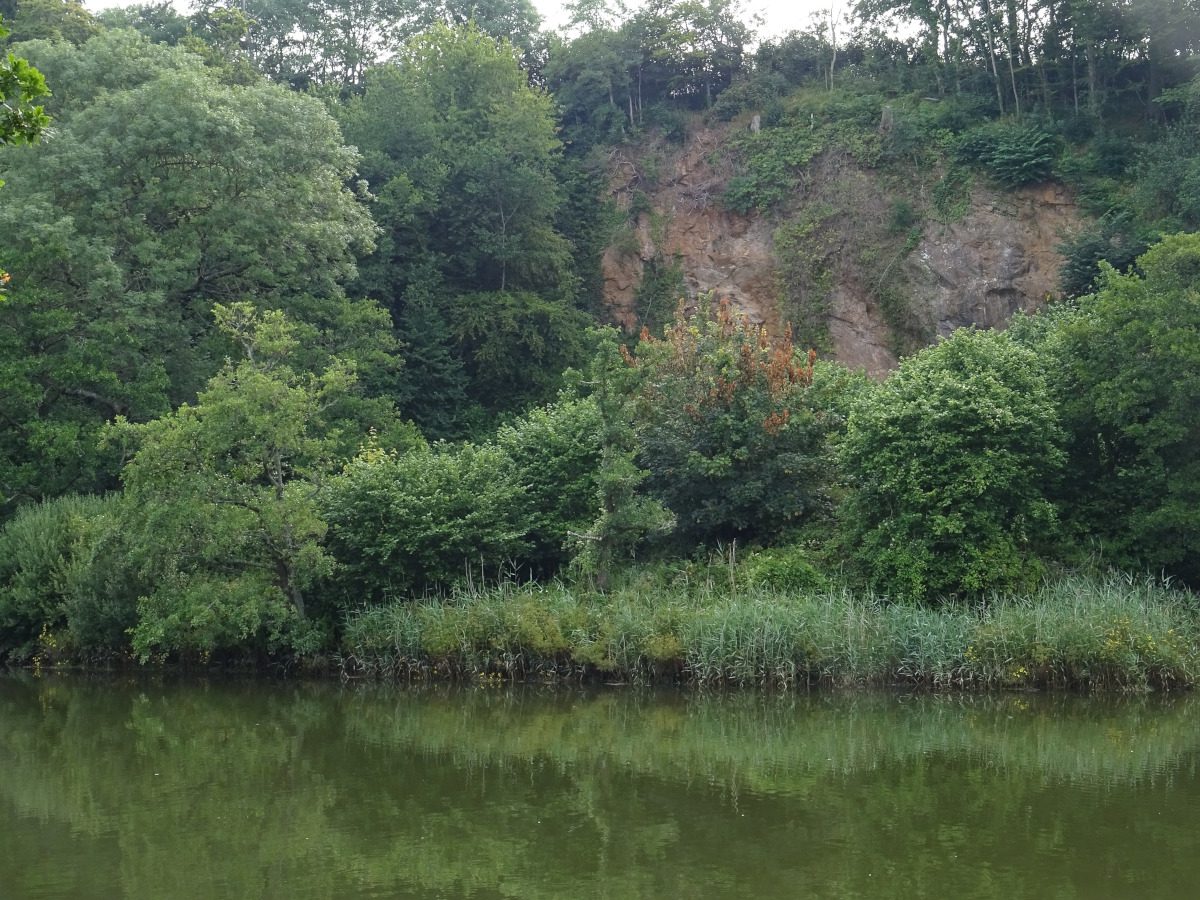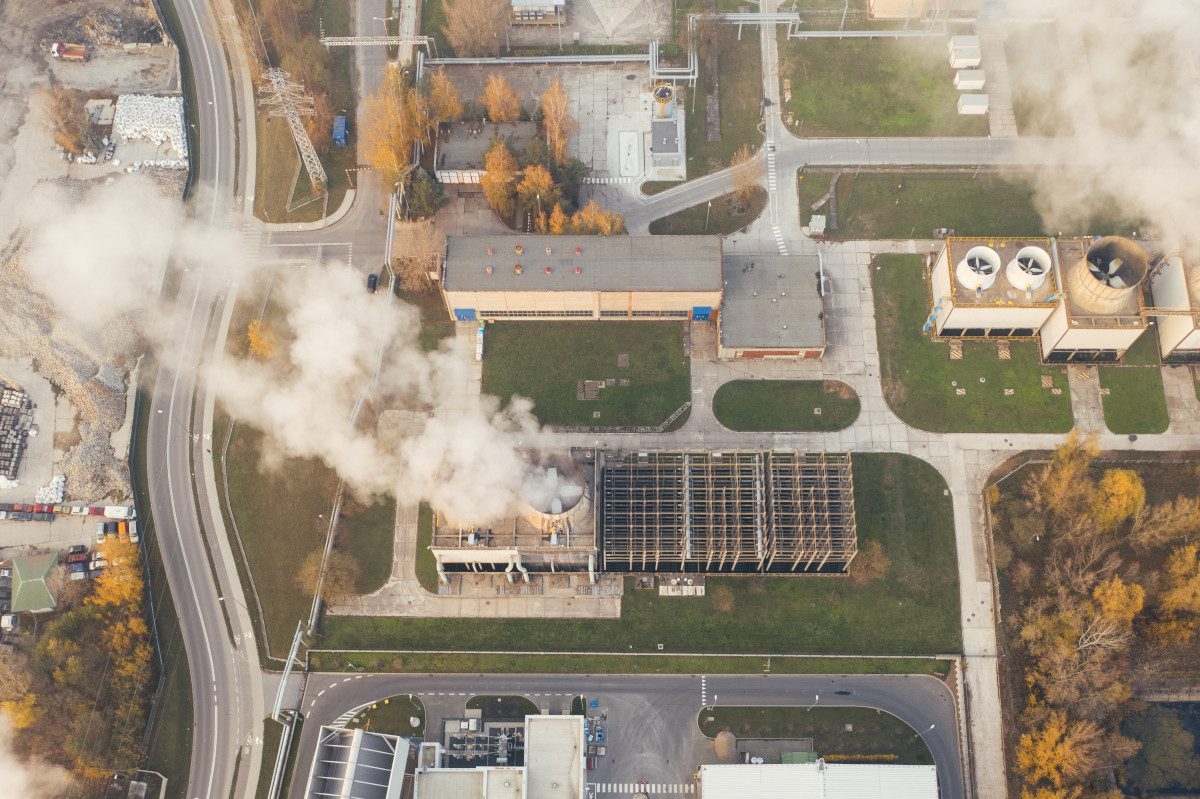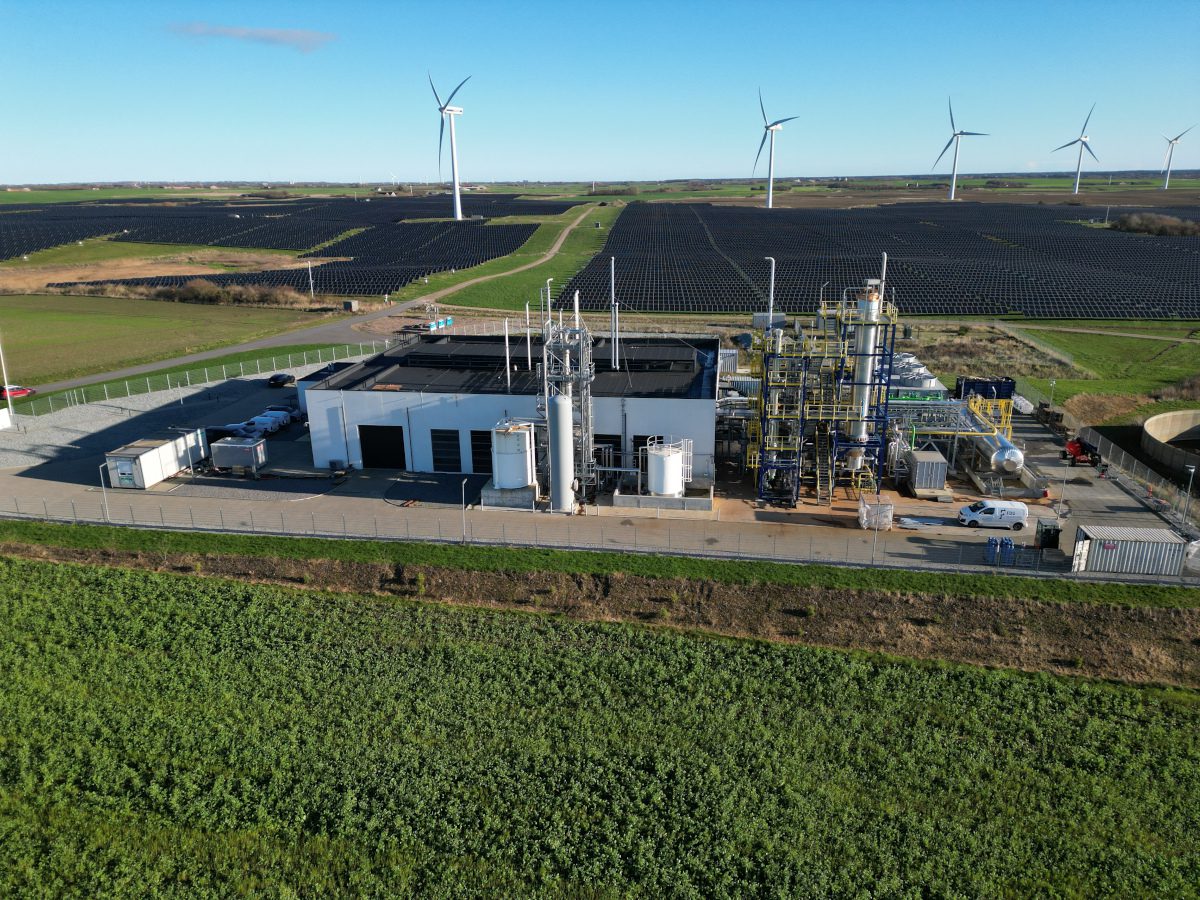Back in 2018, Michael Patterson was one of the first people to own an electric vehicle in Riverton, a town within Wyoming’s Wind River Indian Reservation. Purchasing a Tesla Model 3 was a transformative decision for the environmentally conscious car enthusiast. However, as an early adopter, he faced many questions, stares and sometimes vehicles “rolling coal.”
“People will drive past and blow the black smoke at me,” Patterson said, “and it still happens to us from time to time today.” He believes that while such behavior might occur in other parts of the country, it’s more pronounced in Wyoming, where driving an electric car is less common.
“They want to convey that they have some opinion about it while burning fossil fuels,” he said.
Explore the latest news about what’s at stake for the climate during this election season.
Wyoming has the second-lowest number of EVs in the country after North Dakota, according to the U.S. Department of Energy, with 1,080 registered. To some degree, that makes sense. Wyoming’s vast open spaces, harsh winters that can reduce battery capacity and populations spread out in small rural pockets make many residents wary of EVs. And disagreement between federal and state authorities about the best locations for chargers might also be slowing the growth of electric cars in the Cowboy State.
But Wyoming’s political landscape may pose the most significant barrier to EV adoption due to its strong ties to the fossil fuel industry.
In May 2024, U.S. Sen. John Barrasso of Wyoming and 18 other Republican senators introduced a bill to repeal the EV tax credit, which provides up to $7,500 for new EVs, up to $4,000 for used EVs and includes a commercial clean vehicle credit that helps subsidize leased EVs. The bill would also cut the investment tax credit for EV charging stations that was expanded by the Inflation Reduction Act.
Barrasso argued that working-class families in states like Wyoming shouldn’t have to shoulder the costs of what he views as President Joe Biden’s climate agenda forcing expensive electric cars on Americans who don’t want them and cannot afford them. The Wyoming Senator’s view is right in line with that of former President Donald Trump, who has pledged to eliminate EV subsidies if re-elected in November.


Trump also has falsely accused the Biden administration—including his opponent, Vice President Kamala Harris—of enacting an “EV mandate.” Helping to amplify that charge is Wyoming Gov. Mark Gordon, who joined a coalition of 26 Republican-led states in a lawsuit against the Biden administration, aiming to block its federal fuel efficiency standards for gasoline-powered vehicles.
The standards from the National Highway Traffic Safety Administration, impose stricter fuel efficiency requirements for automakers. The rules are technology-neutral, but in practice, they are expected to encourage the production of more EVs and fewer gasoline-powered vehicles.
Gordon described the new rules as “unworkable.”
“Our federal government should not be issuing overreaching mandates that manipulate the free market,” Gordon said in a press statement after the filing of the lawsuit. “Wyoming residents drive thousands of miles each year through remote areas. They should be able to decide what vehicle technology is most suitable for their needs, not the Biden administration.”
Alicia Cox, executive director at Yellowstone-Teton Clean Cities, disagrees with the governor’s stance, believing the new standards will benefit people.
“I feel like we’ve all been limited for a long time,” Cox said. “With the new standards, it opens up opportunities and options for people, particularly with higher fuel economy. That’s a lot less money that everyday citizens will be spending on fuel costs.”
She believes that Wyoming is gradually seeing an increase in EV usage, and these political tactics have little impact on the ground, especially as the state Department of Transportation, WYDOT, works to accommodate more EVs with federal funding.
So far, Wyoming has filed four lawsuits against the EPA this year. The other three challenge rules affecting the state’s coal industry, which supplies 40 percent of the country’s coal needs. While these lawsuits are not directly related to EVs, they would protect Wyoming’s largest economic sector—the fossil fuel industry—which has been hostile to efforts to speed the adoption of EVs.
“There’s definitely a political conflict where representatives’ money is based on fossil fuel and extraction, so I don’t know what they believe because it’s so driven by their endorsements,” Patterson said. “It feels like posturing more than anything when they say, ‘Oh, I’m going to sue the EPA or challenge the government about this.’”
A Challenging Landscape for EVs
Apart from political barriers, Wyoming faces practical logistical challenges that make the transition to EVs difficult. The state, with a population similar to Baltimore spread over an area nearly twice the size of Illinois, is largely empty. A combination of multifold reasons, including lack of charging infrastructure, influence of the fossil fuel industry, range anxiety and limited availability of dealerships, are also significant obstacles to expanded use of EVs.
According to WYDOT data, the state has 62 charging stations, about half of which are fast chargers that can charge a light-duty electric vehicle battery up to 80 percent in 20 minutes to an hour. The remaining stations are slower Level 2 chargers that may take several hours to charge a vehicle. All the stations are privately owned, with Tesla Superchargers making up the largest share.
WYDOT is working to address the shortage of charging stations with the $24 million it received for infrastructure development through the National Electric Vehicle Infrastructure (NEVI) program. Wyoming has received its first two installments since 2022 and is set to receive $5 million annually through 2026.
The funds must be used for acquiring and installing EV charging infrastructure, traffic control devices such as signs and pavement marking specifically tailored for EVs, operating and maintaining EV infrastructure and creating a database with state EV-related data.


But the state has not yet launched any infrastructure projects, despite receiving the first two of its five years of funding. WYDOT said it was starting from square one.
“Prior to the NEVI program, the department had zero experience in the EV charging infrastructure sector,” said Jordan Young, deputy public affairs officer with the state agency. “We needed time to understand the federal rules and requirements, learn the standards and jargons of the EV infrastructure world, and draft a very technical Request for Proposal.”
The department is currently preparing to invite proposals from contractors interested in developing EV charging and infrastructure projects, and says it has noted considerable interest.
But the state has also found itself at odds with the federal government’s plan because NEVI funding requires that charging stations be placed along interstate highways first. Wyoming argues that urban communities in the state, particularly those that attract the most EVs, have a greater need for these stations.
To secure NEVI program funds each year, WYDOT must propose potential locations for EV charging stations. To qualify, the stations must be located along federally designated alternative fuel corridors, specifically Interstates 25, 80 and 90 in Wyoming. Federal guidelines require that stations be no more than 50 miles apart and within 1 mile of an interstate exit.
Still, Young said, “Finding suitable locations that alleviate range anxiety while keeping people near services has been a major challenge. There’s a lot of sagebrush and antelope out there in between. People want to charge near amenities, not out in the middle of nowhere with 80-mile-an-hour winds whipping around them.”
Wyoming aims to build a comprehensive network of EV stations to serve tourists and support the federally designated Justice40 initiative, a program aimed at delivering 40 percent of the overall benefits of certain federal investments to disadvantaged communities. While the initial investment must focus on interstate corridors, the state can later use any remaining funds to develop infrastructure in other areas.
According to Young, it will take 20 to 26 stations to cover these corridors before funds can be allocated to stations in towns with higher EV traffic.
“After we’re done [building charging stations on the interstates], this strategy will open up funds to build infrastructure for travelers to popular tourist destinations and support local economies by increasing access to EV infrastructure in underserved areas,” Young said.
For 2024, Wyoming has proposed seven new stations along interstates in the eastern and southern parts of the state. But state projections suggest the stations will experience a significant revenue shortfall over the next five years. The earliest an EV charger along Wyoming’s I-90 corridor could break even is 2036, WYDOT believes, which is why it’s not rushing to spend the federal money.
“Given that the funding has no expiration date, we also want to see how our neighboring western states address similar challenges, such as EV charging in rural areas with long distances between population centers,” Young noted.
This story is funded by readers like you.
Our nonprofit newsroom provides award-winning climate coverage free of charge and advertising. We rely on donations from readers like you to keep going. Please donate now to support our work.
Donate Now
The state has no other projects or funding for EV infrastructure beyond the NEVI funds. However, regional authorities are beginning to step up.
Erik Kimball, sustainability coordinator for Teton County, which has the highest number of EVs registered in the state, is working to expand alternative fuel options for the county’s fleet. His efforts include purchasing EVs, installing charging stations and reducing overall fuel consumption and greenhouse gas emissions from county vehicles. Kimball is currently evaluating locations for two new chargers funded by a grant.
More affordable prices for EVs and the increasing availability of all-wheel and four-wheel drive EVs are driving interest in the county, he said.
“We have quite a bit of infrastructure in the town and in Teton County, both public and private, for EVs. Anyone using apps to find charging stations will see this and find us appealing,” Kimball said.
It’s Not Easy Being a Green Car Dealer in Wyoming
Across the rest of the state, interest in EVs is growing slowly as more residents recognize the shifts in the automotive industry and the need to adapt.
Patrick Dawson operates one of only two EV dealerships in Wyoming outside of Jackson. His store in Riverton sells and rents EVs, and he also manages 14 charging stations across seven locations in the state. His business recently became profitable, he said.
“There’s a lot of pushback from the oil and gas industry, which is the top industry here in Wyoming. So EV don’t have a lot of fans locally.”
“It’s challenging to be a pioneer in a state like Wyoming,” Dawson said. “If I don’t work on it, progress will be even slower. I’ve been working on this for 10 years, and we’ve helped thousands of people travel through Wyoming who otherwise wouldn’t have been able to do so easily.”
This summer has been promising for his business, and depending on how the rest of the year goes, he’s planning to expand next summer. Dawson believes that Wyoming’s fossil fuel-driven economy is a major reason why the EV market lags compared to other states.
“It’s an uphill battle,” he said. “There’s a lot of pushback from the oil and gas industry, which is the top industry here in Wyoming. So EV don’t have a lot of fans locally.”
In January 2023, Republican state Sen. Jim Anderson, with support from several other legislators, led a legislative effort that would phase out EVs by 2035. The proposal was largely symbolic, intended as a response to California’s ban on new gas-powered vehicles by 2035. The bill aimed to express dissatisfaction with such bans and to address concerns about the feasibility of EVs in Wyoming, given the state’s reliance on fossil fuels and the current lack of EV infrastructure.
“It’s comical,” said Patterson, the EV owner in Riverton. “They’re trying to appease a few donors with these proposals, but they’ll never go anywhere. People in Wyoming aren’t going to change the narrative about what vehicles are available. The world is moving in one direction, and Wyoming is going against it.”
While the long rural reliance on fossil fuel vehicles has created a mindset in which EVs are seen as unsuitable for Wyoming, that barrier may also fall soon.
Advocacy organizations are working to correct misconceptions about EVs, noting that the latest models have sufficient range for long trips and harsh winter conditions, and that many are now equipped with all-wheel drive to handle rugged terrain, such as on Wyoming mountain passes.
“EVs don’t make sense for everyone,” Cox said, “but they actually make a lot more sense for many people than they might realize.”
About This Story
Perhaps you noticed: This story, like all the news we publish, is free to read. That’s because Inside Climate News is a 501c3 nonprofit organization. We do not charge a subscription fee, lock our news behind a paywall, or clutter our website with ads. We make our news on climate and the environment freely available to you and anyone who wants it.
That’s not all. We also share our news for free with scores of other media organizations around the country. Many of them can’t afford to do environmental journalism of their own. We’ve built bureaus from coast to coast to report local stories, collaborate with local newsrooms and co-publish articles so that this vital work is shared as widely as possible.
Two of us launched ICN in 2007. Six years later we earned a Pulitzer Prize for National Reporting, and now we run the oldest and largest dedicated climate newsroom in the nation. We tell the story in all its complexity. We hold polluters accountable. We expose environmental injustice. We debunk misinformation. We scrutinize solutions and inspire action.
Donations from readers like you fund every aspect of what we do. If you don’t already, will you support our ongoing work, our reporting on the biggest crisis facing our planet, and help us reach even more readers in more places?
Please take a moment to make a tax-deductible donation. Every one of them makes a difference.
Thank you,


















